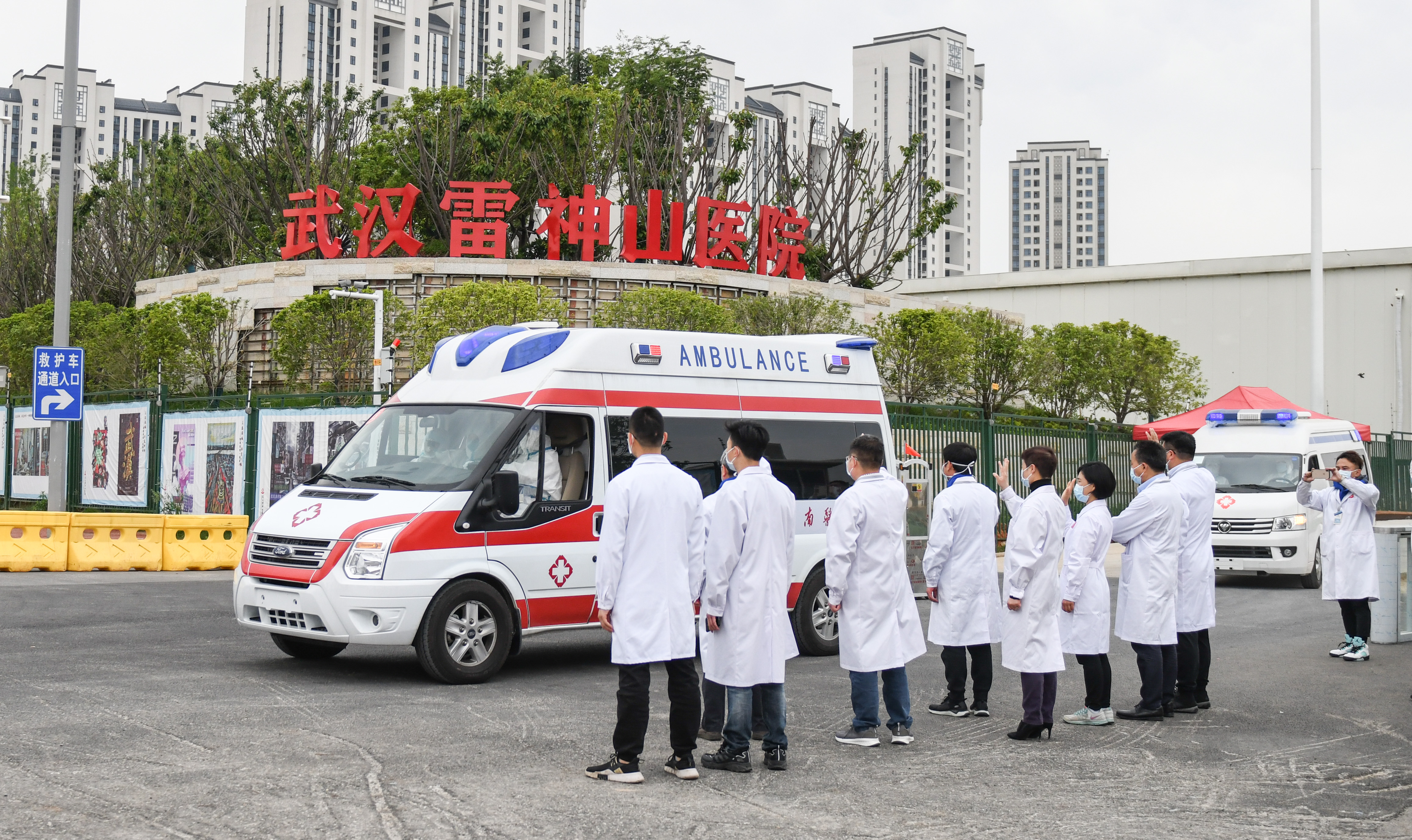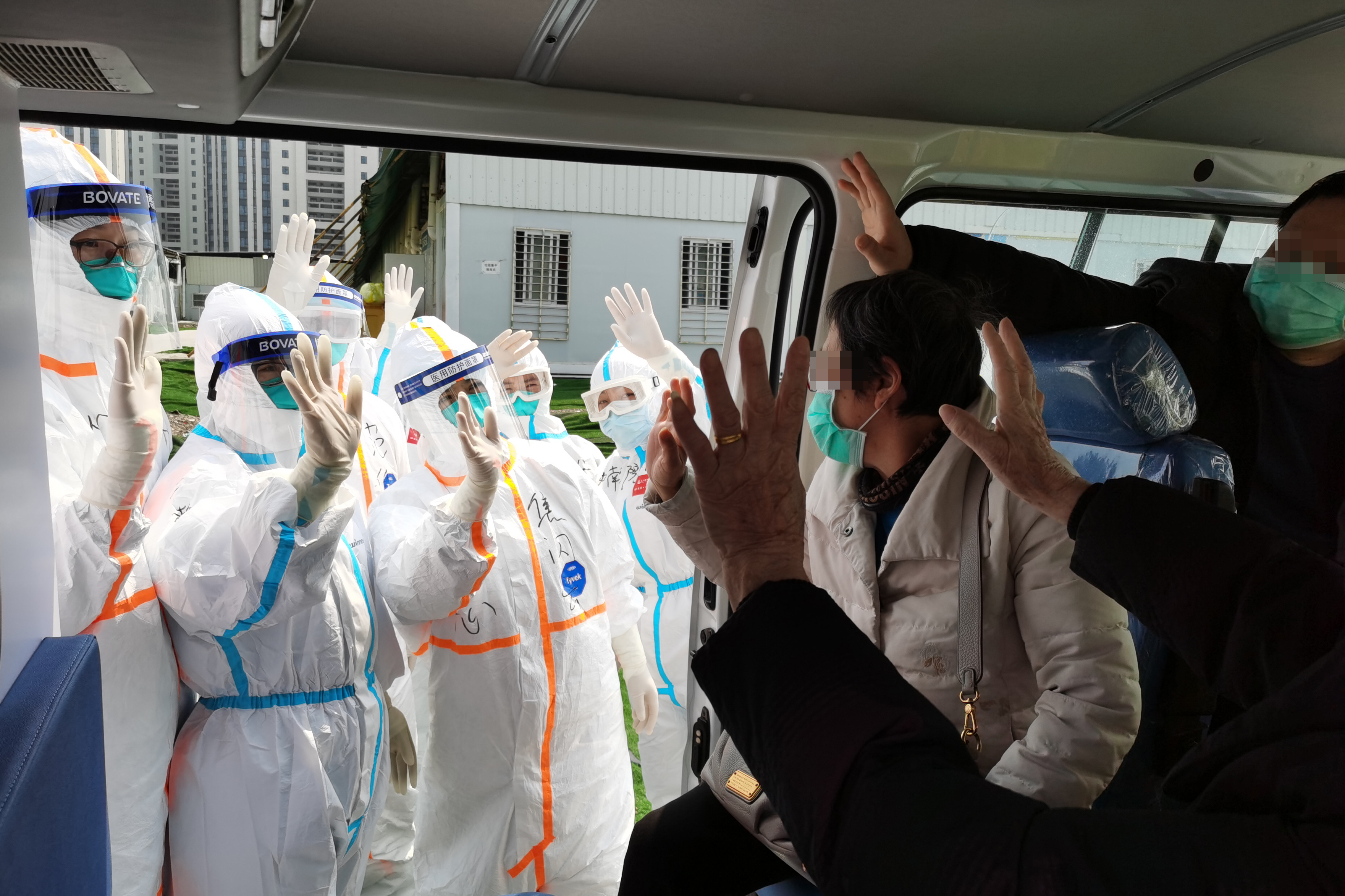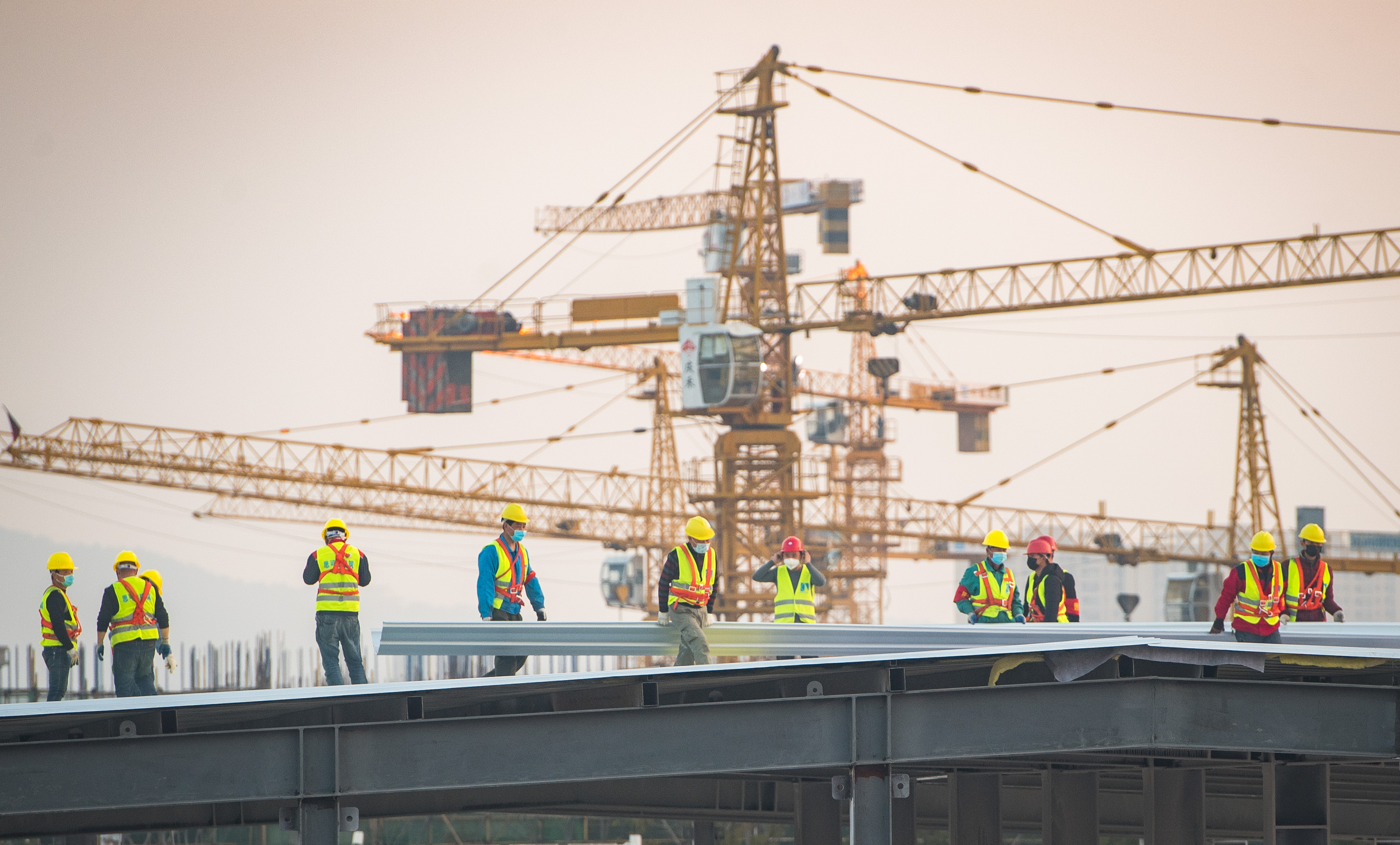Wuhan makeshift hospital retires as epidemic wanes
A makeshift hospital ceased operation in Wuhan, capital of central China's Hubei Province, on Wednesday as the coronavirus epidemic wanes.
A makeshift hospital ceased operation in Wuhan, capital of central China's Hubei Province, on Wednesday as the coronavirus epidemic wanes.
Wuhan Leishenshan (Thunder God Mountain) Hospital was built in 10 days to treat COVID-19 patients. Construction began in late January. Its last batch of patients was transferred to normal hospitals on Tuesday.
At the closing ceremony, doctors and nurses waved flags and wrote their names on the clothes of their colleagues for memory.
"We hope that the hospital will never restart operations," a local district official told an applauding crowd.
After the closing ceremony, medical workers were seen disinfecting and sealing the remaining wards.

Ambulances, transferring the last batch of COVID-19 patients to other hospitals, leave Leishenshan (Thunder God Mountain) Hospital in Wuhan, central China's Hubei Province, April 14, 2020. [Photo/Xinhua]
Wang Xinghuan, head of the hospital, said they worked hard to achieve a low mortality rate of 2.3 percent among its patients, 45 percent of whom were in severe or critical conditions.
The 1,600-bed hospital is managed by the Wuhan-based Zhongnan Hospital of Wuhan University with over 3,000 medics from nine provincial regions in China. A total of 2,011 patients have been treated there.
"After Leishenshan was built, I can see the efforts to increase beds and the support coming from across the nation," said Fang Yanhong, a nurse with the Zhongnan Hospital, adding that the completion of Leishenshan has shored up confidence of local medics in winning the battle.

Photo taken with a mobile phone shows cured patients waving goodbye to medical workers before leaving the Leishenshan hospital in Wuhan, central China's Hubei Province, April 4, 2020. [Photo/Xinhua]
The retirement of the hospital is a landmark development in Wuhan's months-long battle with the epidemic, indicating the city's COVID-19 treatment and medical operations are "back on the normal track," Jiao Yahui, an official with the National Health Commission, told Xinhua.
Jiao said the medical facility was built at a time when "medical resources were in the shortest supply."
It has played a crucial role, enabling the city to admit more patients in a short period of time, thus helping contain the source of infection, she said.
The official said there is no timetable for dismantling the Leishenshan Hospital, noting it could be reactivated at any time if needed.

Photo taken on Feb. 8, 2020 shows the interior view of Leishenshan (Thunder God Mountain) Hospital in Jiangxia District of Wuhan, central China's Hubei Province. [Photo/Xinhua]
Jiao also highlighted the importance of transferring patients from the two makeshift hospitals - Huoshenshan and Leishenshan - to four large hospitals in Wuhan.
"We hope to secure the patients the most effective treatment by placing them at the four hospitals with high-quality medical resources in the city," Jiao said, adding that the treatment of the severe and critical cases remained difficult.
Hectic work, life-and-death moments
Yang Xiao, an ICU doctor in Leishenshan Hospital, said the hospital is well equipped with intensive care facilities.
"The ICU wards here are well equipped with ventilators, monitors and hemodialysis devices. CT and chest radiography were also introduced into the hospital upon its establishment," said the 31-year-old doctor. "The hospital is particularly good at hemodialysis, which is managed by a team of non-local medics who came to support Wuhan."
However, Yang said, "as a temporary hospital, Leishenshan could not compete with large comprehensive hospitals in terms of testing capacity and medicine inventory. So transferring the patients (to large hospitals) will benefit their treatment."
Having worked in Leishenshan for over 20 days, the young doctor said the work there has been hectic and full of life-and-death moments.

People work at the construction site of Leishenshan Hospital in Wuhan, central China's Hubei Province, Feb. 4, 2020. [Photo/Xinhua]
Yang recalled her most impressive patient as an 85-year-old man, who was discharged from Leishenshan a few days ago.
"The retired doctor volunteered to return to his community clinic at the peak of the epidemic and got infected there," she said. "When arriving here, he was very calm. He told me he was already 85 and 'if my time had come, then be it; if I was to live on, then live it to the fullest.'"
Yang was glad she could finally take a rest. "Many local doctors were already stretched to our breaking point ... What I wish to do most (after leaving Leishenshan) is have a good sleep."
Most urgent task
With a construction area of 8 hectares, the Leishenshan Hospital has full 5G coverage and can conduct remote consultations like other large Chinese hospitals, said Wang Liang, deputy chief engineer of China Construction Third Bureau First Engineering Co., Ltd., the hospital's constructor.

People from China Construction Third Engineering Bureau Co., Ltd. work at the construction site of Leishenshan (Thunder God Mountain) Hospital in Wuhan, central China's Hubei Province, Jan. 30, 2020. [Photo/Xinhua]
Wang said building Leishenshan within 10 days is the most urgent task the company has ever undertaken despite its rich experience in building hospitals. The company received the design at the last minute, and the MEP (mechanical, electrical and plumbing) workload of such an improvised epidemic hospital is three to four times that of a comprehensive hospital.
"The construction involved more than 1.5 million meters of wires, 150,000 meters of cables and 800 units of ventilation equipment. At the peak of the construction, 22,000 people worked at the same time at the construction site," he said, noting that this was completed in a locked-down city during the Spring Festival, a time when most factories cease operation and workers return to their hometowns for a family reunion.
"We mobilized all the company's buyers to hunt for materials across China, and we summoned workers from across Hubei Province and other parts of China," Wang said.
"Many came here not for money, but more out of passion -- they wanted to fight together with Wuhan."

